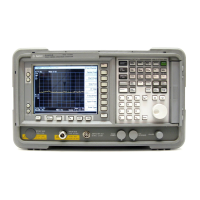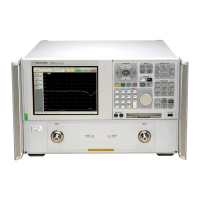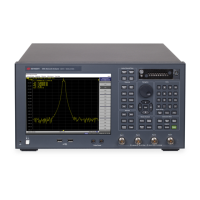Chapter 5 5-5
Making GSM Cable and Antenna Measurements
Making Cable Fault Location Measurements
5. Make the measurement.
Read the measurement and save it if required.
The result is shown on the screen. Press the
Marker front panel key
to move the marker to the fault(s) of interest. An example is shown
in Figure 5-3.
Figure 5-3 Example Cable Fault Location Measurement Screen
Trace Points
Changing the number of trace points in the cable fault affects the
minimum and maximum measurable distances. As a general rule, the
longer the cable, the more trace points you should use. Up to 8192 trace
points can be used but due to the computationally intensive FFT, the
measurement becomes slower as the number of points used increases.
To ensure the fastest possible measurement speed, always use a
number of trace points equal to the power of 2—for example 512 or
1024.
FFT Windowing Function
The cable fault location measurement uses an FFT to convert the
analyzer frequency trace into a distance trace. To get the best results
from the FFT you must apply the most suitable windowing function to
the frequency trace before performing the FFT. Table 5-1 on page 5-6
describes the windowing functions available:
